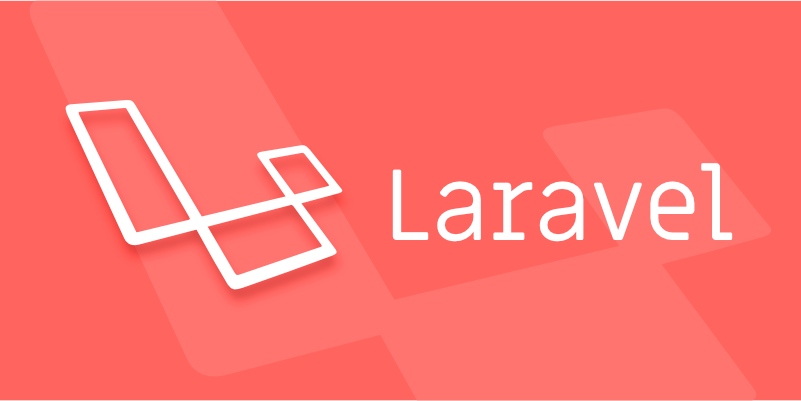Implementing Resource Controllers for RESTful APIs in Laravel?
Jul 07, 2025 am 12:04 AMResource Controllers in Laravel provide an efficient way to organize RESTful API code by automating standard HTTP actions. 1. They include predefined methods for index, create, store, show, edit, update, and destroy. 2. You generate them using the Artisan command php artisan make:controller PostController --resource. 3. Routes are defined with Route::resource('posts', PostController::class) in api.php or web.php. 4. You can limit routes using only() or except(). 5. Best practices include using plural resource names, applying middleware in constructors, and using API Resources for JSON responses.

When you're building RESTful APIs in Laravel, using Resource Controllers is one of the most efficient ways to organize your code. Instead of manually defining every route and controller method, a single command can scaffold out all the necessary methods for common actions like index, show, store, update, and destroy. It's clean, standardized, and saves time.

What Is a Resource Controller?
A Resource Controller in Laravel is a controller that includes predefined methods for handling typical HTTP actions:

-
index()– Show a list of resources -
create()– Display a form to create a new resource -
store()– Save a newly created resource -
show($id)– Display a specific resource -
edit($id)– Show a form to edit an existing resource -
update($id)– Update the specified resource -
destroy($id)– Delete the specified resource
You generate it with a simple Artisan command:
php artisan make:controller PostController --resource
This sets up all those methods ready for you to fill in with logic.

How to Define Routes Using Resource Controllers
Once you have a Resource Controller, wiring up routes becomes very straightforward. In your routes/api.php or web.php, use the Route::resource() helper:
Route::resource('posts', PostController::class);This single line creates all the standard routes mapped to the correct controller methods.
If you want only certain routes, you can limit them:
To include only some methods:
Route::resource('posts', PostController::class)->only(['index', 'show']);Or exclude some:
Route::resource('posts', PostController::class)->except(['create', 'edit']);
This is especially useful when building APIs where you don’t need create/edit views (since they’re usually handled on the frontend).
Tips for Customizing Resource Controllers
While the default setup works well, there are a few practical tweaks worth knowing:
Naming Conventions Matter
Use plural nouns for resource names (posts,users) to follow REST conventions. Laravel expects this structure in both routing and controllers.Custom Method Names
If you need to add custom methods to your controller (likerestore()orpublish()), consider making them part of a separate controller or use route macros if they’re related but not standard CRUD actions.API Resource Responses
When working with APIs, wrap your responses using Laravel’sresponse()->json()consistently. You might also look into Laravel API Resources for transforming models into JSON responses cleanly.Middleware Inside Controllers
You can apply middleware directly in the controller’s constructor. For example:public function __construct() { $this->middleware('auth')->except(['index', 'show']); }This helps secure your endpoints without cluttering your route files.
Final Notes
Using Resource Controllers doesn't just save time — it enforces consistency across your app. Whether you're building a small blog API or a large-scale application, sticking to this pattern makes your code easier to read and maintain. Just remember to tailor which routes you expose, especially in API contexts, and keep your response formatting consistent.
That’s pretty much it — nothing too complicated once you get used to the flow.
The above is the detailed content of Implementing Resource Controllers for RESTful APIs in Laravel?. For more information, please follow other related articles on the PHP Chinese website!

Hot AI Tools

Undress AI Tool
Undress images for free

Undresser.AI Undress
AI-powered app for creating realistic nude photos

AI Clothes Remover
Online AI tool for removing clothes from photos.

Clothoff.io
AI clothes remover

Video Face Swap
Swap faces in any video effortlessly with our completely free AI face swap tool!

Hot Article

Hot Tools

Notepad++7.3.1
Easy-to-use and free code editor

SublimeText3 Chinese version
Chinese version, very easy to use

Zend Studio 13.0.1
Powerful PHP integrated development environment

Dreamweaver CS6
Visual web development tools

SublimeText3 Mac version
God-level code editing software (SublimeText3)

Hot Topics
 What are routes in Laravel, and how are they defined?
Jun 12, 2025 pm 08:21 PM
What are routes in Laravel, and how are they defined?
Jun 12, 2025 pm 08:21 PM
In Laravel, routing is the entry point of the application that defines the response logic when a client requests a specific URI. The route maps the URL to the corresponding processing code, which usually contains HTTP methods, URIs, and actions (closures or controller methods). 1. Basic structure of route definition: bind requests using Route::verb('/uri',action); 2. Supports multiple HTTP verbs such as GET, POST, PUT, etc.; 3. Dynamic parameters can be defined through {param} and data can be passed; 4. Routes can be named to generate URLs or redirects; 5. Use grouping functions to uniformly add prefixes, middleware and other sharing settings; 6. Routing files are divided into web.php, ap according to their purpose
 What are policies in Laravel, and how are they used?
Jun 21, 2025 am 12:21 AM
What are policies in Laravel, and how are they used?
Jun 21, 2025 am 12:21 AM
InLaravel,policiesorganizeauthorizationlogicformodelactions.1.Policiesareclasseswithmethodslikeview,create,update,anddeletethatreturntrueorfalsebasedonuserpermissions.2.Toregisterapolicy,mapthemodeltoitspolicyinthe$policiesarrayofAuthServiceProvider.
 How do I create new records in the database using Eloquent?
Jun 14, 2025 am 12:34 AM
How do I create new records in the database using Eloquent?
Jun 14, 2025 am 12:34 AM
To create new records in the database using Eloquent, there are four main methods: 1. Use the create method to quickly create records by passing in the attribute array, such as User::create(['name'=>'JohnDoe','email'=>'john@example.com']); 2. Use the save method to manually instantiate the model and assign values ??to save one by one, which is suitable for scenarios where conditional assignment or extra logic is required; 3. Use firstOrCreate to find or create records based on search conditions to avoid duplicate data; 4. Use updateOrCreate to find records and update, if not, create them, which is suitable for processing imported data, etc., which may be repetitive.
 How do I run seeders in Laravel? (php artisan db:seed)
Jun 12, 2025 pm 06:01 PM
How do I run seeders in Laravel? (php artisan db:seed)
Jun 12, 2025 pm 06:01 PM
Thephpartisandb:seedcommandinLaravelisusedtopopulatethedatabasewithtestordefaultdata.1.Itexecutestherun()methodinseederclasseslocatedin/database/seeders.2.Developerscanrunallseeders,aspecificseederusing--class,ortruncatetablesbeforeseedingwith--trunc
 What is the purpose of the artisan command-line tool in Laravel?
Jun 13, 2025 am 11:17 AM
What is the purpose of the artisan command-line tool in Laravel?
Jun 13, 2025 am 11:17 AM
Artisan is a command line tool of Laravel to improve development efficiency. Its core functions include: 1. Generate code structures, such as controllers, models, etc., and automatically create files through make: controller and other commands; 2. Manage database migration and fill, use migrate to run migration, and db:seed to fill data; 3. Support custom commands, such as make:command creation command class to implement business logic encapsulation; 4. Provide debugging and environment management functions, such as key:generate to generate keys, and serve to start the development server. Proficiency in using Artisan can significantly improve Laravel development efficiency.
 How do I install Laravel on my operating system (Windows, macOS, Linux)?
Jun 19, 2025 am 12:31 AM
How do I install Laravel on my operating system (Windows, macOS, Linux)?
Jun 19, 2025 am 12:31 AM
Yes,youcaninstallLaravelonanyoperatingsystembyfollowingthesesteps:1.InstallPHPandrequiredextensionslikembstring,openssl,andxmlusingtoolslikeXAMPPonWindows,HomebrewonmacOS,oraptonLinux;2.InstallComposer,usinganinstalleronWindowsorterminalcommandsonmac
 How do I define methods (actions) in a controller?
Jun 14, 2025 am 12:38 AM
How do I define methods (actions) in a controller?
Jun 14, 2025 am 12:38 AM
Defining a method (also known as an action) in a controller is to tell the application what to do when someone visits a specific URL. These methods usually process requests, process data, and return responses such as HTML pages or JSON. Understanding the basic structure: Most web frameworks (such as RubyonRails, Laravel, or SpringMVC) use controllers to group related operations. Methods within each controller usually correspond to a route, i.e. the URL path that someone can access. For example, there may be the following methods in PostsController: 1.index() – display post list; 2.show() – display individual posts; 3.create() – handle creating new posts; 4.u
 How do I run tests in Laravel? (php artisan test)
Jun 13, 2025 am 12:02 AM
How do I run tests in Laravel? (php artisan test)
Jun 13, 2025 am 12:02 AM
ToruntestsinLaraveleffectively,usethephpartisantestcommandwhichsimplifiesPHPUnitusage.1.Setupa.env.testingfileandconfigurephpunit.xmltouseatestdatabaselikeSQLite.2.Generatetestfilesusingphpartisanmake:test,using--unitforunittests.3.Writetestswithmeth






